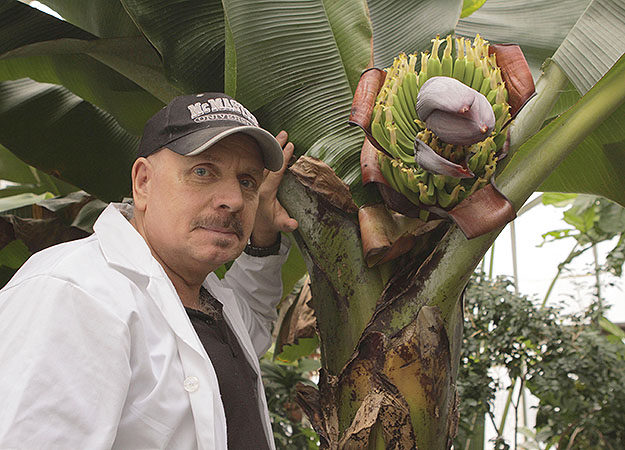Going bananas at McMaster’s Biology Greenhouse

The warm temperature inside McMaster's Biology Greenhouse is awfully a-peel-ing to greenhouse technician Arthur Yeas, along with the banana plants he cultivates.
The air outside might be frigid, but at McMaster bananas are in bloom.
During the blooming process, banana plants “throw” their flower cluster over and out of the centre of the plant, explained greenhouse technician Arthur Yeas.
This process began several weeks ago at the University’s Biology Greenhouse.
The facility is home to more than 1,000 plants – from the carnivorous nepenthes, which will make a meal of most any insect, to “living stones,” which can easily be mistaken for pebbles.

But it’s the edible plants that usually attract the most attention from visitors, said Yeas. These include citrus plants, coffee, cocoa and, right now, banana.
Banana plants typically range in height from three to seven metres, and leaves may grow to more than two metres long and 60 centimetres wide.
The perennial plant is grown in more than 100 countries around the world, and last year was the world’s fourth most valuable food crop.
In addition to housing some of the world’s rarest and most beautiful plants, the Biology Greenhouse is also used for research projects and labs by students in Life Sciences, Geography, Biology and other programs.


